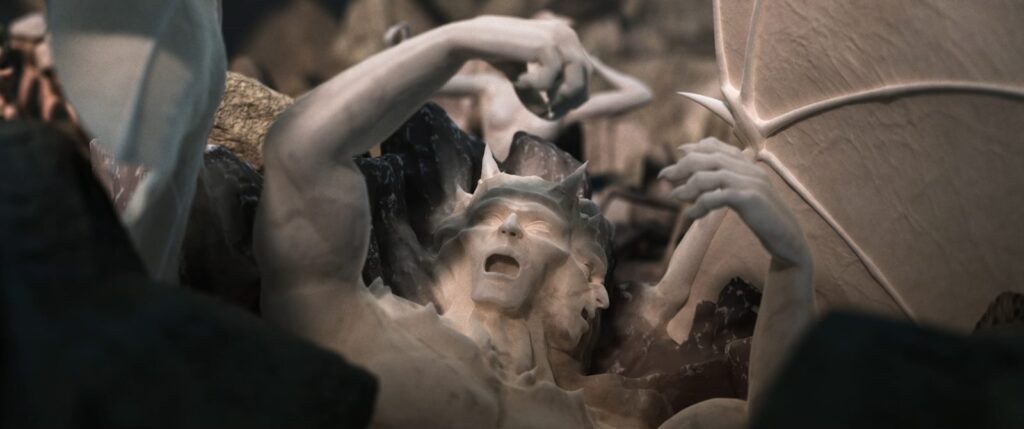
Wednesday, November 30, with Rai Cinema and Anica – Union of Digital Publishers and Creators in the section “The New Frontiers of Cinema”
A panel on new languages, from education to innovation (9:30 a.m.)
Torino Film Festival (Turin), Nov. 21, 2022 – ETT, creative digital industry, among the protagonists of the 40th edition of the Torino Film Festival. The SCAI Group company will be hosted by Rai Cinema and Anica – Union of Digital Publishers and Creators, partners in the new section “The New Frontiers of Cinema” as part of the project “School in the Front Row” implemented by the National Cinema Museum of Turin as part of the National Plan for Cinema and Images for Schools, and promoted by the Ministry of Culture and the Ministry of Education. Wednesday, Nov. 30 – at the Mole Antonelliana at 9:30 a.m. – an appointment dedicated to the world of school and new languages, from education to innovation, and a focus on Dante with a VR screening and panel discussion on the preview of “The Divine Comedy VR” – Purgatory” by Federico Basso. An ETT production soon to be available on Rai Cinema Channel VR. A work that offers the viewer innovative and highly immersive ways to enjoy the imagined world inside one of the masterpieces of world literature and poetry, a symbol of our country’s linguistic-cultural identity. Panel guests, 10 a.m: Paola Traversa, Coord. Educational Services, National Cinema Museum of Turin; Giovanni Verreschi, A.D. ETT S.p.A. SCAI Group; director Federico Basso; digital storyteller, Alessandro Cavallaro ETT S.p.A. SCAI Group; Gabriele Campanella, Cinema Engineering Researcher, Polytechnic University of Turin. Moderator: Tommaso Maggi, Rai Cinema strategic and digital marketing. Project creator and curator Adele Magnelli, International Project Manager, ETT S.p.A., will also be present. SCAI Group. A preview screening in linear and VR of the second chapter “The Divine Comedy VR: Purgatory.” From an idea by Adele Magnelli, the short film is written and directed by Federico Basso, based on a subject by Alessandro Cavallaro , who provided scientific supervision and verse selection. The short film, lasting about eight and a half minutes, accompanied by the voice of actor Francesco Pannofino, allows the viewer to step into the shoes of the Supreme Poet and cross the threshold of Purgatory to embark on his journey. Purgatory manifests itself in all its grandeur: a rocky mountain towering in the center of the southern hemisphere, in the ocean. Coming out of Hell, the passage of time is admitted in this realm: here one can see sunrise and sunset, day and night, and light is shown in all its hues. Upon entering this primordial setting, the viewer will subjectively cross the threshold of Purgatory, seen through Dante’s eyes: a door in the rock, guarded by an angel armed with a sword. The first frame is that of the proud: souls forced by huge boulders to look resignedly at the ground, where scenes of humility and pride are depicted: stories carved into high reliefs prodigiously animated in “visible speak.” This is followed by the woes of the envious, slumped to the ground with their eyes sewn shut, and the lustful, advancing dramatically into the fire of the last frame. Finally, having arrived at the Earthly Paradise, the woman who moved Dante to the journey through the first two realms appears: Beatrice. The ancient fire of love is rekindled, followed by the promise of the last stage, that of Heavenly Paradise. After painful repentance, Dante will finally be ready to extinguish the memory of all sin, now “pure and willing to ascend to the stars.” The settings were entirely modeled, sculpted and painted in 3D. Animation of plants, fire and water were made based on physical parameters, making up to 100 million particles interact in the simulations. As for the human figure, which becomes more central in Purgatorio than in Inferno, we opted for the integration in compositing of actors filmed on green screen in those scenes involving close-ups, where faces and expressions are perceived. The crowd scenes were made by filming the real movements of actors (MOCAP: motion capture), and bringing those movements back to 3D character. In addition, the original soundtracks are the work of Marco Morini, a work that pays special attention to sound design to enrich the viewer’s all-round experience.
